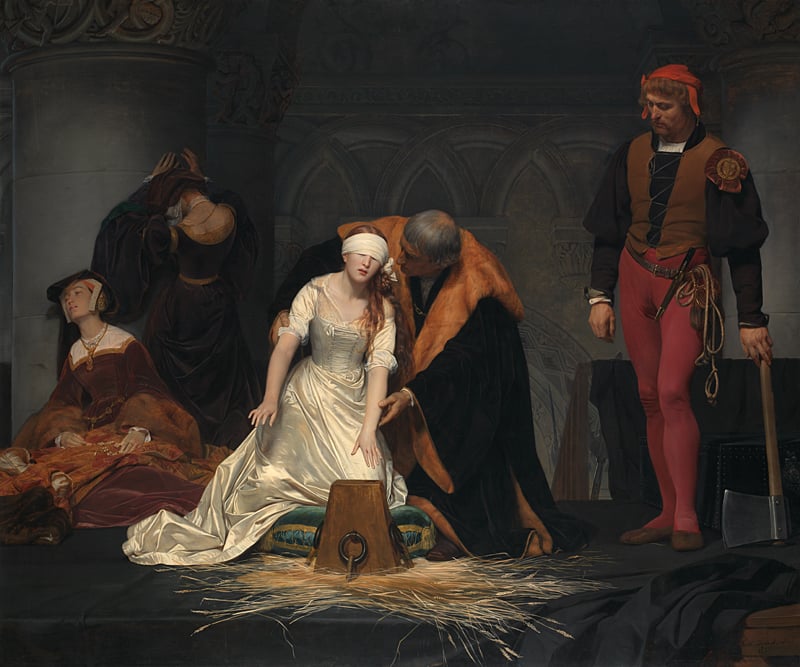Art World
Long-Lost Panting by French Master Paul Delaroche Authenticated on TV Show
The work, bought in 1989 for $650 is now worth $100,000.

The work, bought in 1989 for $650 is now worth $100,000.

Lorena Muñoz-Alonso

A long-lost painting by the French master Paul Delaroche has resurfaced thanks to the sleuthing work carried out by the BBC program Fake or Fortune.
The art collector and dealer Neil Wilson, who passed away in 2014, fell in love with the painting and bought it in 1989 for £500 ($650) as an unsigned, unattributed canvas while working at Christie’s.
From the beginning, though, he suspected it might be a Delaroche, and although he had investigated the case, he sadly didn’t live to prove it.
His widow, Becky Wilson, took it upon herself to prove that her late husband was right and that the painting—which depicts what seems to be a kneeling medieval queen praying, accompanied by her maids—was by the French master.
To do so, she contacted BBC’s anchor Fiona Bruce and the Old Master dealer Philip Mould, who—aided by a host of experts and specialists from art and archival institutions across the UK and France—carried out a riveting investigation that yielded unexpected results.
The first major breakthrough was the discovery that the painting in fact depicted the Queen of Hungary and Saint Amelie, and that the last King of France, Louis Philippe I, indeed commissioned Delaroche to paint the portrait of Amelie as a present to honor his wife, the Queen Marie-Amelie, who considered her namesake her patron saint.
The original painting, as it happens, has been lost for many decades.
The British Museum in London turned out to have in its archives a preparatory sketch of the painting, signed by Delaroche himself and dated to 1821, which showed some striking similarities but also some worrying differences to the canvas owned by the Wilsons.
Further research revealed that the original painting was used as a model for a huge and stunning stained-glass window for the Queen’s chapel at her summer palace, the Château d’Eu in Normandy.
Again, the stained-glass window and a sanctioned copy of the painting showed key similarities, but the colors of the garments and backdrops differed from that of Wilson, which made it difficult to confirm its authorship.
Yet, Aviva Burnstock, one of the world’s leading authorities in the scientific study of art at London’s Courtauld Institute, was able to establish, thanks to state of the art technology, that the painting had been heavily restored and over-painted, and that the original colors of the dresses had dramatically faded, with the originals closely matching those of the copies.
The evidence was compelling enough for Professor Stephen Bann, a top Delaroche expert, to declare the painting to be the long-lost Delaroche portrait of Saint Amelie.
Moreover, because the restorations were done, at least partly, by Delaroche himself, the estimated value of the painting went from £50,000 ($65,000) up to £75,000 ($98,000).
Asked about what she would do with the painting after having proved its sensational attribution and impeccable provenance, Becky Wilson was in two minds.
On the one had, she said, the work was intrinsically related to her memory of her late husband, but on the other, the family’s income had been dramatically reduced with her husband’s passing, so a sale could also possibly be in the cards.
Treasure hunters from all over the world, stay tuned to upcoming Old Master sales in the UK’s auction houses.